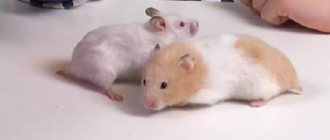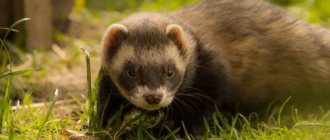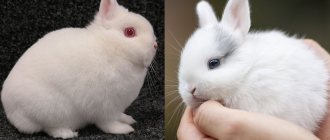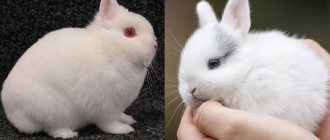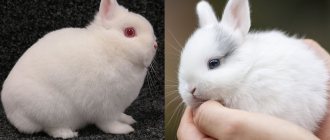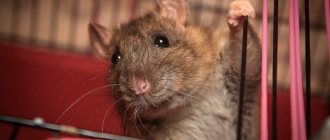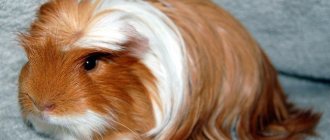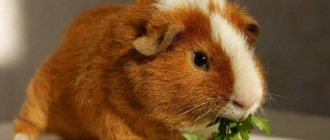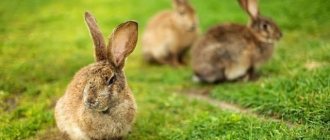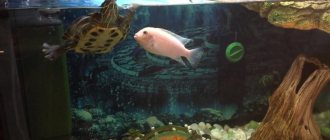One of the most popular dog breeds is spaniels, which are distinguished by their friendly and cheerful character, active behavior and curiosity. When getting a pet, owners rarely think about the animal's lifespan. It is important to understand that pets have a much shorter lifespan than humans. If there are children in the family, it is necessary to explain to the kids why their pet cannot be with them all their lives. This article will talk about how long spaniels of different types live, what are the features of this breed, and how to extend the life of a pet.
Representative of the Cocker Spaniel breed
History of the English Cocker Spaniel breed
English Cocker Spaniel
Despite the fact that the official history of the breed begins in the 19th century, residents of Great Britain became acquainted with its representatives much earlier. Well, to be more precise, all English cockers are descended from spaniels that have lived on the shores of Foggy Albion since time immemorial. Scientists have ranked the spaniels themselves among the relatives of the ancient ash dogs that accompanied man during the Bronze Age. Although some experts still consider the Mediterranean coast to be the homeland of animals, citing as evidence the Old French name of the breed “espaigneul”, that is, literally, a Spanish dog. However, be that as it may, the ancestors of cockers in England took root and even began to participate in crossbreeding experiments, which led to the stratification of this dog tribe.
By nature, all spaniels are good pursuers of feathered game. However, in the 19th century, the hunting qualities of dogs underwent a large-scale “upgrade” on the part of breeders, as a result of which the spaniel genus split into two distinct families. Large individuals, the so-called field spaniels, whose weight exceeded 11 kg, began to compete with their lighter counterparts - the ancestors of today's cockers. By the way, the British Esquires themselves preferred to go hunting for game birds with more massive dogs, leaving the cocker spaniels to hunt woodcocks, which gave the animals a start in life.
1893 is the year of official recognition of the English Cocker Spaniel breed and its final separation from the Field Spaniel clan. At first, the weight of dogs was strictly regulated by the standard, which somewhat hampered their breeding. But when restrictions were lifted, British nurseries were able to catch up in just a few years. The breed was imported to Russia several times, but it did not arouse great enthusiasm among both breeders and ordinary people. As a result, the full-fledged breeding of English cocker spaniels in our country began very late, approximately in the mid-70s.
An interesting fact: British breeders claim that the word “cocker” in the name of the breed is a shortened form of the English “woodcock”.
Video
* We invite you to watch a video about the Russian Hunting Spaniel . In fact, in front of you is a playlist in which you can select and watch any of 20 videos about a given dog breed by simply clicking on the button in the upper right corner of the window. In addition, the material contains quite a lot of photos. By looking at them you can find out what a Russian Hunting Spaniel looks like.
In this article:
|
Appearance of an English Cocker Spaniel
English Cocker Spaniel Puppy
Although the English Cocker is inferior in appearance to his glamorous American “cousin”, he does not look like a poor relative compared to him. In general, the “English” are larger than the “American” (the average weight of an adult male is 13-14.5 kg) and are a centimeter or two higher at the withers. At the same time, they have a completely harmonious physique. The dog looks especially graceful in motion, and it doesn’t matter at all whether it’s rushing across the field after prey or just trying to catch a Frisbee disc.
Head
The English Cocker Spaniel has a normal, not wide and moderately short skull. The muzzle is proportional, square, with a raised stop.
Jaws
Massive, with a classic type of bite (“scissors”).
Nose
The exceptional sense of smell of English Cocker Spaniels is ensured by their fleshy nose with wide, open nostrils.
Eyes
Large, without noticeable bulge, dark brown or brown in color. Dogs with chocolate coats typically have nutty irises.
Ears
Long, oval, low set. Covered with soft, silky hair. Ear type: hanging.
Neck
The neck of a correct English Cocker should not be very long, strong, muscular and without folds.
Muzzle of an English Cocker Spaniel
Frame
Purebred representatives of the breed have a strong body of compact size. The back of the English Cocker Spaniel is straight, without a hint of sagging. The croup is massive, but short. The chest is moderately deep and spacious, but without noticeable convexity or barrel-shape.
Limbs
Great guys
The ideal option is to have strong, straight and not overly elongated legs. The shoulders and knees of this breed are well bent, which makes the dog's movements freer, and the reach of the front limbs greater. The elastic push of the English Cocker is provided by good angles of the articulations of the metatarsus and hock joint. The animal's paws are rounded, with toes tightly adjacent to each other and elastic pads.
Tail
The tail of the English Cocker Spaniel breed is traditionally docked. But since this procedure is prohibited in a number of countries, at exhibitions there are individuals who have never been subjected to it. The natural length of a dog's tail is to the hocks, the set is noticeably lower than the level of the back, the shape is thick at the base and tapering as it approaches the tip. The docked tail should not be too short, which would prevent the “Englishman” from clearly expressing his own emotions and, as a result, significantly worsen his hunting performance.
Wool
Fitted, very soft, not frizzy or wavy. On the front and hind legs, belly and groin area the hair is more abundant, with a slight wave. There are fringes.
Color
Black and white English Cocker Spaniel puppy
The FCI standard grants English Cocker Spaniels the right to solid, spotted, tricolor and speckled color types.
Solid (one color):
- golden;
- black;
- red;
- chocolate;
- liver with scorch marks;
- black with tan.
Spotted:
- fawn with white;
- red and white;
- liver with white;
- black and white.
Tricolor:
- black and white with tan;
- liver white with tan.
Speckled:
- fawn roan;
- red roan;
- blue roan;
- hepatic roan;
- liver roan with scorch marks;
- blue roan with tan marks.
Defects and disqualifying defects
There are a lot of reasons for lowering the rating of show cocker spaniels, from curly hair to a short neck. Disadvantages that exclude the possibility of an animal entering the “Champions League” also include a deformed or hunchbacked back, cow-like limbs and white “patches” on the chest and throat of individuals with a monocolor.
An English cocker can withdraw from the competition at the selection stage only if he is diagnosed with malocclusion, pink lobes, depigmented lips, yellowish irises and cryptorchidism. Aggressive individuals and dogs that amble have nothing to do at exhibitions either.
How long do Russian spaniels live or how to extend the life of a little hunter?
The Russian spaniel is considered the pride of Russian dog breeders. He has an expressive appearance, a sociable and friendly character, and excellent instincts.
The average life expectancy of the breed is longer than that of other hunting dogs. Despite this, owners always want their dog to live even longer.
We will tell you in detail how to properly care for your pet in order to prolong its life, and we will also look at how to avoid the accidental death of a dog.
Photo of an English Cocker Spaniel
Popular nicknames
The choice of a nickname for a pet should be approached responsibly. It is important that the dog’s name is easy to pronounce, sonorous and short - animals quickly remember such words and begin to associate themselves with them.
The male can be called:
- Alan;
- Archie;
- Butch;
- Barney;
- Thunder;
- Wild;
- Kai;
- Kevin;
- Muffy;
- Matt;
- Noah;
- Oscar;
- Pirate;
- Robie;
- Roy;
- Raf;
- Roni;
- Ren;
- Falcon;
- Sebastian;
- Sparky;
- Hoshi;
- Charlie;
- Chance;
- Eric.
Names suitable for girls:
- Amba;
- Arina;
- Amur;
- Boni;
- Snowstorm;
- Dory;
- Dolly;
- Dekla;
- Christie;
- Lika;
- Laura;
- Molly;
- Mary;
- Nika;
- Naida;
- Puma;
- Sparta;
- Arrow;
- Cynthia;
- Secret;
- Ula;
- Frida;
- Chara;
- Yula;
- Clear.
In order for the puppy to quickly remember his name, you need to pronounce it as often as possible and call your pet by name, treating him with a treat - this contributes to better perception and consolidation of positive associations.
Character of the English Cocker Spaniel
A child plays with English cocker spaniels.
English cocker spaniels are inquisitive, self-aware nimble dogs with a friendly, but not at all weak, character. They will value and obey the owner by default, but they will not allow the rest of the household to manipulate them. Moreover, when trying to force your pet to do something, be prepared to observe stubbornness and skillful imitation of misunderstanding. If we talk about respect, then first of all the dog feels it towards the owner, and secondly – towards itself. Children in this hierarchical pyramid occupy the penultimate step. Yes, the “English” play with them with pleasure, but do not expect angelic patience and iron endurance from the dog when the child begins to cause serious discomfort or pain to it.
Most cockers are peaceful and accommodating (exceptions are also possible), so adding cats and other dogs to them is quite acceptable. But in the case of birds, not everything is so smooth. Left alone with canaries, parrots or chickens, a pet is unlikely to cope with the temptation to hone its hunting techniques on them. The call of the ancestors - nothing can be done. In the games, the “English” are like Nancy Drew in dog form. Possessing an excellent sense of smell (American cockers are resting) and excellent eyesight, they love to play detective and look for seemingly forever lost objects. While walking, most individuals turn on the “excavator” mode and begin to excavate flower beds and sandy hills, which looks very funny from the outside.
As for temperament, inside every English cocker spaniel there lives a restless party animal who despises regularity and imposingness. These long-eared livelies are sincerely happy to have any company. Moreover, the more participants there are, the better, because doggies really love to play in public. Born tacticians and psychologists, the “English” will always find a way to squeeze into even the least friendly dog team and gain a foothold in it as a shaggy-haired entertainer.
Recently, more and more breeders have noted that English Cockers have a love of traveling on various types of transport. So, for example, taking advantage of the owner’s absent-mindedness, during a walk they can easily jump into a shuttle bus and drive off in an unknown direction. If you have your own car, your cocker spaniel will be happy to test its speed by lounging in the back seat and exposing its muzzle to the wind through the open window.
Happy paws
Is he good with children and does he get along with other pets?
Russian spaniels get along well with children and love to spend time with them, sharing their love for active and outdoor games . A dog will never harm a child and will always protect him from offenders.
However, this only applies to the owner’s children; Russian spaniels behave warily and even aggressively with strangers and strangers.
Representatives of this breed get along well with other pets, including cats, if they grew up with them.
At the same time, rodents and birds are treated rather negatively - hunting instincts take over and these animals become the object of hunting for spaniels.
Education and training
It is impossible to force an English Cocker Spaniel to study under pressure, but it is very easy to interest him in a new, unusual activity. Cockers are simply driven by physical activity, so they learn best from lessons that involve reasonable physical activity and are presented in a playful way. This breed’s intelligence is also fine, so it won’t take much time to master basic command techniques, but classes should not be long and monotonously repetitive - this way the dog will quickly lose interest in them.
Master, take the leash
Raising an English cocker begins with its socialization. At 2-3 months, the baby needs to be taught to observe subordination and etiquette, as well as overcome fear of strangers. Possessing gourmet inclinations and a keen sense of smell, small English cocker spaniels love to watch their owner eat, while simultaneously managing to play the role of a hungry sufferer. Do not fall for such shows and under no circumstances treat the pretender with food from your own table. Each such concession reduces your authority in the eyes of the dog, which quickly begins to understand how to apply pressure to get what it wants. It is also better to avoid extremes. An authoritarian parenting style for a puppy is just as harmful as excessive lisp. Teach your pet basic commands unobtrusively, but persistently and systematically.
Despite their cute appearance, English cocker spaniels are no strangers to leadership habits. Usually a wave of independence hits puppies at the age of 3-4 months. During this period, the dog tries to take the position of head of the house, displacing the owner. If you don’t want to find yourself under the thumb of a shaggy dominant, you’ll have to prove your worth to him hourly. The methods can be very different. In particular, during walks it is better to “extinguish” your pet’s emotional outbursts. Use prohibitions more often in everyday life, and also do not allow a puppy walking on a leash to drag you along in tow.
They start trying on a collar for an English Cocker at 3 months of age. It is better to put on the “accessory” for the first time during the game so that the animal does not notice it. You can do this procedure before feeding: food will distract the dog from unpleasant sensations. At first, you should choose a longer leash, gradually shortening it as you get used to it. If the puppy is 8 months old, you can move on to the General Training Course (GTC), which is considered a mandatory program for cocker spaniels. Even if you are not going to take your pet hunting, he must obey your requirements.
Causes of premature death
The owner of a Russian spaniel must know the main reasons why his pet can die at a fairly young age:
- poor quality nutrition;
- insufficient physical activity and short walks;
- lack of vaccinations;
- untimely treatment against parasites;
- excess weight and overeating;
- hunting injuries;
- poisoning with toxic substances;
- untimely treatment.
It is important! Curious and active Russian Spaniels, unfortunately, often get hit by cars. To avoid a tragic situation in the city, representatives of the breed are only walked on a leash.
English Cocker Spaniel training
Hunting with an English Cocker Spaniel
In modern conditions, the “English” are gradually changing their qualifications, increasingly turning into sporting dogs and playful companions. However, the hunting instincts of the breed do not suffer from this situation. English cocker spaniels can work with both swamp and field or even upland game. However, taking into account the fact that each type of bird has its own odor, varying in intensity, it is unlikely to be possible to train a dog on both snipe and black grouse at once. Experienced owners recommend starting to introduce your pet to hunting with a wading bird. According to observations, a dog that deftly handles great snipes performs just as well when working with quails. At the same time, dogs, accustomed to lifting only wild animals onto their wings, slow down and get lost in wetlands.
The English Cocker Spaniel begins to be trained from an early age and in a playful way. For example, you can tie a bird's wing to a string and twitch it in front of a 3-month-old puppy's nose. The surprised animal will immediately try to grab the animated bunch of feathers, and your task is to allow him to do this. Just do not allow the puppy to chew the “prey”, since this habit will later be transferred to real hunting trophies. At 4 months, babies are trained to search for and present objects. The dog is allowed to sniff the bird carcass, after which they hide it in a secluded place and offer to find the missing one. At first, you can use hints - a hand gesture in the direction of an object or a deliberately created draft that carries the smell of game throughout the apartment.
Commands “Come to me!” and “Nearby!” in hunting dogs they must be practiced to the point of automatism, therefore the OKD completed before training is only beneficial for the English cocker. Another important skill is indifference to shots, which is the most difficult for the “English”. They begin to accustom their pet to the sharp sounds and smell of gunpowder in the field. First, shots are fired at a distance (the optimal distance is 150 m) and only after the dog gets used to the noise, the gap between the shooter and the animal is gradually reduced.
Important: in order to develop a clear understanding of your requirements and compliance in your English Cocker Spaniel, use only one prohibitive command out of several possible ones. Do not disorient the dog with the word “Ugh!” if before that he only heard from you “No!”
It is better to start getting acquainted with swamp game with great snipes, which fly quite low and heavily. Swamp hens are also a good target for an inexperienced cocker. In upland hunting, the optimal target will be a brood of grouse. As a rule, English cocker spaniels are not involved in working with waterfowl, but if you wish, it is also possible to train your pet for this type of game. Wait until mid-July, when the ducklings are grown but not fully fledged, and begin training. Well, an option for the most seasoned is hare hunting. Why specifically for the aged? Because spaniels love to chase their long-eared dogs aimlessly, in 99% of cases leaving the owner without prey.
Color variations
In accordance with the breed standard, the coat of Russian spaniels can be one-color, two- or three-color.
Black
The coat is solid black, without white markings or with their presence in clearly defined places (forehead, muzzle, throat, chest, belly, paws, tip of tail).
Brown
This color appears in the absence of black pigment; the eyes and nose are also brown.
Ginger
The color of the coat varies from light fawn to dark red, the nose is black or brown, and the eyes are dark brown.
Two-color
This color can be of 2 types:
- contrasting - spots of the primary color are located on the white coat, puppies are born with a pink nose and paws with several specks;
- speckled - almost black coat with blurry, barely visible specks; puppies have dark noses and paw pads.
Both contrasting and speckled puppies have large white markings at birth; the presence of speckling can be predicted by the color of the nose and paw pads.
Tricolor
This color includes the coat of black-piebald and brown-piebald contrasting with tan or speckled colors.
Maintenance and care
Grooming an English Cocker Spaniel
English Cocker Spaniels feel most comfortable in private country houses, where they will always have the opportunity to chase butterflies and dig in the sand. Keeping in an apartment is also possible, but with regular and long walks. English cockers are not just hunters, but playful and active naughty creatures who need to run and fool around to their heart's content to maintain mental balance.
It is not at all necessary to take part in all the pet’s antics while walking. Just let him off the leash in an uncrowded and safe place and let him run circles around the area. However, if you throw a frisbee or a ball to your ward, he will gladly support your initiative and join the game. The “Englishman” is supposed to be walked twice a day, and each of these walks should last at least an hour. It is a big mistake to take your dog outside just to relieve yourself. In the end, the lack of free time is the owner’s problem, not the cocker spaniel’s.
Hygiene
Caring for an English Cocker Spaniel is not the most difficult, but the animal will need to be given some attention. Mandatory: trimming nails, cleaning eyes and teeth (all according to the same scheme as for other breeds). On the issue of bathing, breeders' opinions were divided. Some people recommend washing cockers as little as possible, because too much splashing in the bathroom can cause dandruff in pets. Opponents of this method advocate regular “bath days” (once every 7-10 days) and the use of veterinary shampoos that preserve the structure of the coat and stimulate its growth.
Black English Cocker Spaniel
Brushing is a daily ritual in the life of an English Cocker Spaniel, so add soft and hard brushes, a slicker brush, a tangle cutter and a long-toothed metal comb to your must-have list. Owners planning to save money on professional grooming should add a trimming glove and comb, as well as hairdressing scissors.
The English Cocker Spaniel's floppy ears require extra attention. For example, when the animal is eating, it is advisable to tie them with an elastic band at the back of the head. This way the ears will get less dirty and distract the dog. Cockers themselves greet such manipulations without enthusiasm, but over time they get used to reacting to them adequately. Bad ear odor, which inexperienced Cocker Spaniel owners often complain about, is the result of insufficient care. In the ear funnel of spaniels there are a lot of hairs that block the flow of air inside, as well as magnetize dirt and sulfur secretions, which are the source of the characteristic “amber”. The problem is solved by plucking the hair in the ear canal and removing the dirt accumulated in it using veterinary lotion and a sponge.
English Cocker Spaniel Grooming
There are several basic techniques for processing the wool of English Cocker Spaniels, which can be combined if necessary:
- stripping (pinching fur using a special knife; an ideal technique for processing the head and body of a pet);
- plaking (plucking hair with fingers);
- clippervek (ultra-short clipper haircut);
- flatvec (regular haircut with a clipper);
- blending (cutting with scissors).
When cutting your English Cocker Spaniel's hair yourself, avoid radically changing the animal's image. In the homeland of the breed, its representatives are groomed very carefully, so an inhabitant of Foggy Albion leaving the groomer’s office looks as if he had never entered it at all. The optimal haircut option is to go over the dog’s head with a trimming knife, strip the body and slightly shorten the hair on the legs. The fur between the toes must also be trimmed.
English cocker spaniels and water
Despite the fact that the English Cocker Spaniel breed was bred mainly for hunting swamp game and rarely worked with waterfowl, its representatives’ thirst for water is simply fantastic. If there is no normal body of water nearby, the cocker will calmly swim in a puddle, shake himself off next to the owner and will sincerely wonder why the latter has such a sour face. Don’t be lazy in the warm season and take your pet to the river beach. Firstly, because bathing is an additional physical activity that indoor cockers often lack. And secondly, because water relieves dogs from fatigue and stress accumulated during the day.
Feeding
Cocker spaniel and food
Most “English” people are not prone to spontaneous gluttony, but are quite capable of falling into food addiction. And all because cockers are notorious gourmets, having their own taste preferences that the owner needs to control. In addition, dogs that walk little and unproductively, but fill their bellies heartily with treats, quickly develop obesity, which significantly reduces their life expectancy. If you do not set out to send your pet “over the rainbow”, do not give in to his pleading glances and do not feed the animal with delicacies.
Now about the daily menu. Meat is given to English cocker spaniels boiled or raw at the rate of 50 g of product per kilogram of animal body weight. Stringy lamb, beef, and poultry (boneless) are best suited. By-products can only be introduced into the diet if they are thoroughly frozen. This way, the risk of infecting the dog with worms and intestinal parasites is minimized.
Prohibited products:
- legumes;
- potato;
- pasta, as well as any confectionery and bakery products;
- sausage products;
- bones;
- broccoli;
- tomato sauce and dishes with it.
You can supplement the English Spaniel's menu with rice or buckwheat porridge, fermented milk products, sea fish and vegetables in the form of sliced vegetables seasoned with vegetable oil. Eggs are given to dogs soft-boiled or in the form of an omelet. Cockers also have a real passion for fruits, but since most of them can provoke digestive upset in the animal, it is worth treating it with such delicacies less often. Or, as an option, use dried fruits and raisins as reward treats. Once a week, offer your pet a clove of garlic, which works as a natural anthelmintic. In addition, during the period from 3 to 7 months, when the skeleton is actively forming, it is recommended to mix grated chalk or 2-3 tablets of calcium lactate into the puppy’s food.
Happy paws
Master, leave me the wand!
Nutritional Features
You can feed Russian spaniels with natural products or industrial food, it is only important to follow a few important rules:
- do not mix both types of nutrition;
- ensure that your diet is balanced and contains all the necessary vitamins and minerals;
- strictly control the volume of portions consumed by your pet - 40 g/kg weight of dry food and 30/60 g/kg of natural products;
- Give your dog fasting days twice a month, reducing the daily amount of food by 60%.
IMPORTANT!
The portion can be increased only for animals after illness, lactating bitches and in winter for dogs living in an enclosure.
With a natural diet, the owner has the opportunity to independently choose fresh and high-quality food for the dog, but such a diet requires a lot of time for daily food preparation. In addition, creating a balanced menu is quite difficult.
The pet must be given:
- lean meat;
- offal;
- sea fish;
- porridge;
- vegetables and fruits;
- dairy products;
- greens as natural dietary supplements;
- eggs.
Representatives of the breed should not be fed:
- animal fats;
- bones;
- smoked meats and sausages;
- pickles, marinades;
- pork;
- citrus fruits;
- potatoes;
- sweets, baked goods;
- spicy, fried foods.
If we are talking about industrial feed, then their advantage is a much more convenient method of storage and use, as well as a composition enriched with vitamins and minerals.
In addition, a wide range of food allows you to choose a diet for your pet in accordance with its age, health and physiological state.
You should choose only high-quality premium, super-premium or holistic food.
Products from the brands Go, Hills, Royal Canin, Probalance, Pro Plan, Savarra, Acana have proven themselves well..
Menu for the week
| Day of the week | Menu |
| Monday | 500 g meat, 100 g greens, 200 g oatmeal, 100 g yogurt, 100 g vegetables |
| Tuesday | 600 g boiled fish, 100 ml natural yogurt, 100 g vegetables, 50 g cottage cheese, 150 g buckwheat porridge |
| Wednesday | 50 ml kefir, 50 g herbs, 550 g offal, 100 g cottage cheese and 100 g vegetables, 150 g oatmeal |
| Thursday | 150 g cottage cheese, 50 g greens, 1 egg, 500 g beef, 150 g vegetables, 150 g rice porridge |
| Friday | 50 ml kefir, 50 g greens, 550 g offal, 100 g cottage cheese, 100 g vegetables, 150 g rice porridge |
| Saturday | 600 g of boiled sea fish, 100 ml of natural yogurt, 100 g of vegetables, 50 g of cottage cheese and 150 g of buckwheat porridge |
| Sunday | 500 g meat, 100 g greens, 200 g oatmeal, 100 g cottage cheese, 100 g vegetables |
Health and Diseases of English Cocker Spaniels
The average lifespan of an English Cocker Spaniel is 10-14 years, but the animal does not always pass this time period in good health.
Typical diseases of the breed:
- urolithiasis disease;
- hip dysplasia;
- melanoma;
- otitis;
- deafness;
- food allergies;
- distichiasis;
- eye diseases (conjunctivitis, entropion/eversion, cataracts);
- epilepsy;
- hydrocephalus;
- hepatitis;
- atopy;
- discopathy;
- perianal adenocarcinoma.
The mental health of the breed is also not always standard. For example, many cocker spaniels are prone to hysterical fits, which can be treated with physical exercise combined with regular walking.
What does life expectancy depend on?
Factors that affect a pet's lifespan:
- Dog health. It is important to conduct regular (at least 2 times a year) preventive examination by a veterinarian. This becomes especially important when the pet reaches 7 years of age.
- Hereditary predisposition to diseases, the presence of genetic abnormalities.
- Quality of keeping and care of animals.
- Food quality.
- Force majeure situations. It is recommended to walk your dog on a leash.
It is better to walk your dog on a leash
How to choose a puppy
English Cocker Spaniel puppy with mom
- Attend dog shows often to meet reputable breeders and their pets.
- If you buy a puppy as a future hunter, make sure that his father and mother have diplomas in field and swamp game. In most cases, offspring inherit parental talents.
- English Cocker Spaniel females are easier to train than males, but both are good at work. Take this fact into account if you are going to instill hunting skills in an animal yourself.
- It is worth checking with a breeder who boasts of the field diplomas of the puppy’s parents about the type of document available. It’s great if the dog has a 1st degree certificate. This gives hope that the hunting abilities of her offspring will be quite clearly expressed. A 3rd degree diploma is not the biggest reason for pride.
- It is better to choose cheerful, curious and playful kids. But it is better to refuse the constantly vocal English cockers. Excessive “talkativeness” is of no use to the future hunter.
- Those who are looking for a friendly pet for their apartment, on the contrary, should take a closer look at more phlegmatic puppies.
Factors influencing lifespan
The life expectancy of dogs is influenced by factors:
- Physical development;
- Does the animal perform loads appropriate for its age and breed;
- Complete rest;
- A balanced diet enriched with nutrients;
- Sufficient communication and attention.
All these quality indicators of life depend 100% on the owner. The way he takes care of his pet shapes the animal’s resistance to stress and various diseases.
A balanced diet from birth lays the foundation for the pet’s physical health for the rest of its life and even into old age. An older dog should be fed soft food to avoid problems with teeth and swallowing.
In old age, animals can suffer from various diseases, most often deteriorating hearing, vision, and disruptions in the urinary system.
Another problem that can significantly reduce the age of any animal is excess weight. Its excess has a bad effect on the pet’s health, affecting the cardiovascular system and bone structure. It is necessary to control the weight of the animal, especially in old age.
Regular medical examinations, vaccinations, timely contacting a veterinary clinic in case of problems - this is what will keep your pet in the right shape. Constantly caring for your pet throughout its life can significantly increase its cycle.
Photos of English Cocker Spaniel puppies
Description
American or "dwarf" cocker spaniels are active, friendly and good-natured medium-sized animals. Over the years, they have gained popularity in all countries of the world. Dogs are suitable for large families with children, but they will also be excellent “companions” for single people.
— Advertising —
Without communication, the species will begin to bark, chew things, or urinate to show its displeasure. This is a sensitive dog that needs an owner. The species always tries to obey and is ready to obey the owner. The animal is calm and easy to train, it respects your authority. The dog needs gentle training methods, as it does not respond well to harshness.
Price range
Ideal representatives of the breed without any flaws and having all the necessary documents cost about 20-25 thousand rubles.
A puppy with a good pedigree, but with minor defects in the exterior, will cost approximately 12-18 thousand rubles . A cocker spaniel belonging to a breeding marriage or a mixed breed can be bought for 4-8 thousand rubles.
Signs of aging
Dog experts believe that the Russian spaniel is fully formed by the age of 3–4 years. A dog of this age should produce healthy puppies, participate in exhibitions and competitions, go hunting and be active and healthy. The duration of this period is approximately 4 years, and after 7 years, spaniels gradually begin to age.
The main signs of aging of Russian spaniels:
- Coarse, dull, bald coat.
- Decreased hearing, vision and smell.
- Slowing down the reaction rate.
- Increased sensitivity to cold.
- Preference for sleep over play.
- Replacement of part of muscle tissue with fat.
- Unsteady and slow gait.
The owner of a Russian spaniel must understand from the moment of purchase that he takes responsibility for the life of the pet. The necessary care, love and care of the owner will make both the dog and the person happy. In addition, these are important components of a long and healthy dog's life.
https://vplate.ru/spaniel/skolko-zhivut/https://dog-care.ru/zdorove/voprosy/skolko-zhivut-amerikanskie-koker-spanieli.htmlhttps://litbro.ru/porody-sobak/ russkij-spaniel/skolko-zhivut-russkie-spanieli
How old do dogs grow?
Intensive growth in dogs is observed until 6 months of age, then the rate decreases. The further development of healthy dogs kept in appropriate conditions depends on the breed and size. Let's look at the growth characteristics of small, medium and large dogs.
Small dog breeds include:
- Yorkshire Terrier - growth lasts up to 8–9 months.
Pekingese - up to 9 months, sometimes up to 12 months.
Chihuahuas grow in height for up to 8 months, then gain strength.
Pug - up to 6 or up to 9 months with active weight gain.
Toy terrier - up to 180 days.
Toy poodle - growth continues until 7-8 months.
Pomeranian Spitz - its growth ends at 6 months, after which the bones become stronger.
Dachshund - up to 8 months in height, then gets stronger.
Staffordshire Bull Terrier - up to 7 months, growth stops by 10-12 months.
Shih Tzu - grows at 4-6 months.
Medium breeds
Medium breeds of dogs grow until about 12 months of age; in terms of breeds it looks like this:
- Spaniel - about 8 months, matures up to 1.5 years. Cocker Spaniel
French bulldog - up to 8-9 months, then grows in breadth.
Basset hound - up to 8-10 months, until about 15 months it gains muscle mass.
Laika - up to about 9-10 months.
Chow chow - up to 11 months.
Husky - grows in height up to 1 year, in muscles - up to 1.5–2 years.
Pit bull terrier - up to 9 months, the end of growth occurs up to 1.5 years.
Cocker Spaniel - up to 8 months in height, fully formed at just over 12 months of age.
Bull Terrier - grows in height up to 10 months; the appearance of an adult animal is formed up to 1.5 years.
Golden Retriever - grows by 1 year, bones and muscle mass gain shape by 1.5 years.
Large (large) breeds
Large breeds take the longest to grow and by the age of 3 years they take on the appearance of an adult dog. The growth of large breed dogs is as follows:
- Rottweiler - grows in height up to 1 year, gets stronger up to 2 years.
- German Shepherd - growth occurs up to 1 year, muscle mass increases up to 2 years.
- Labrador Retriever - grows up to 1.5 years, fully matures up to 2.5 years.
- Saint Bernard - grows up to 12 months, by the age of 3 it gradually gains shape.
- Caucasian Shepherd Dog - growth in height occurs up to 1 year, formation of muscle mass - up to 2 years.
- Mastiff - grows up to 1 year, the exterior is formed up to 2.5 years.
- Irish Wolfhound - up to 1.5–2 years.
- Great Dane - at the withers it grows up to 1.5 years, in weight - up to 3.
- Moscow Watchdog - height growth stops at 14 months, sometimes at 1.5 years of age, formation stops at 3 years of age.
- Alabai - up to 1 year, gets stronger up to 3 years.
Cryonics or cryopreservation
Cryonics, or cryopreservation (from the ancient Greek κρύος - “cold; frost”) is a technology that allows you to preserve the bodies of people and animals in a state of deep cold in order to wait for the future, when defrosting technologies become available to revive them, and if a frozen person was now ill with an incurable disease - cure. Now during cryopreservation it is possible to freeze not the whole body, but only the head or brain.
At cryogenic temperatures, there are no significant changes in a biological object (for hundreds and thousands of years) - this fact serves as the basis for supporters of cryonics as a method for achieving life extension.
Ways to extend life
To prolong your pet's life, you need to provide it with proper care.
It is important to devote time to the dog’s psychological state. Pugs are very sociable and friendly, so owners should give their love and affection in return.
Take care of your nerves
When taking home a pug, you need to remember that dogs are peaceful and very sensitive. They cannot be scolded or beaten. A negative attitude is bad for your pet's nerves. The dog becomes intimidated.
It is important to show care, play and pet your pet
Avoid stress
Stressful situations can happen if a person does not pay attention to the dog or is away from home for a long time. When going on a long business trip, your pet should not be left alone
Pugs begin to worry and feel sad. Against this background, various pathologies can develop.
It is also worth protecting a small dog from communicating with large dogs, which can scare the pug.
Owner reviews
Below we have given a couple of reviews from owners of the Russian Spaniel dog breed, which we received in personal messages. If you found these reviews useful, write your review in the special feedback field below and share your experience. After all, a live review from a spaniel owner is very valuable for people considering purchasing a puppy of this breed, who would like to learn more about the wonderful Russian Spaniel dog breed.
Nikolay: “When I was going to get a dog, I had a choice of two breeds: Russian black spaniel and cocker. I doubted that I needed a dog for hunting and fishing. Having studied almost everything about Russian spaniels on the Internet, I gave preference to the ROS puppy. And I was not mistaken. This is an unusual dog. She is at the same time calm at home, active and inquisitive in the forest. It is important to let her express this activity to the fullest. The spaniel is cramped in the courtyard of a multi-storey building; he needs a lot of free space.”
Svetlana: “My brother the hunter has a black spaniel. This is a tireless dog, an energizer battery. Curious, inquisitive, a real explorer! One can envy her energy. The children adore her, she answers them in kind. It’s always fun and interesting with her.”
Procedure at home step by step
The scheme for creating a hygienic hairstyle is simple, and it can be applied with equal success to both English and American cockers.
Before you start trimming the dog’s fur, you need to wash it and dry it with a hairdryer, comb it, and if there are tangles, sort them out.
The back, croup and withers are combed with a furminator, a trimming knife, or plucked using fingertips. The head can be trimmed or shaved.
The muzzle, the inside and the outer upper third of the ears are shaved with a machine. The neck is shaved down to the collarbones, leaving a triangle on the chest. English spaniels have the hair removed from the front of their paws, leaving the feathering at the back.
The hair under the tail is removed using a machine.
Using straight scissors, shape the ears, draw a line of feathers on the paws and tail, and trim the desired length of the skirt. For the English, the fur on the hind paws is smoothed out.
Breeding
An important characteristic when breeding individuals is the health of the future parents. Before mating two dogs, make sure that they do not have any hereditary diseases. The most favorable age for mating is 2 years. Although puberty occurs earlier, it is still recommended to wait to make sure your pets are healthy. The bitch's estrus lasts 71-127 days. It is “visible” to the human eye that occurs in 21-32 days.
The animal's gestation period lasts about 58 days. The average number of puppies is 5. However, even with such a small number, not all survive.
During and after childbirth, a sudden drop in the mother's temperature may occur. Enlist the help of a veterinarian to ensure the process goes smoothly. If your pet is taking too long to give birth, the puppy may be stuck and the birth canal is narrow. Therefore, it is better to enlist the help of your veterinarian in advance.
Interesting Facts
- The name "cocker" comes from the English word "woodcock" - forest bird (woodcock). It was this feathered game that was hunted by the first representatives of the breed.
- These dogs are often used by law enforcement agencies to search for drugs and other illegal substances.
- The writer Mikhail Prishvin had 4 spaniels.
- The children's book “Tomka” by Evgeny Charushin is dedicated to a spaniel puppy.
Gene therapy
Spanish scientists from the National Cancer Research Center (Centro Nacional de Investigaciones Oncologicas, CNIO) in 2012, under the leadership of director Maria Blasco, proved in practice that in an adult mouse, after a single injection of the drug they developed, which acts directly on the genes of an adult animal, the duration of life.
Further studies on mice showed the safety and effectiveness of this method. Mice that received the "longevity shot" at one year of age lived an average of 24% longer. At the age of two years – 13% longer. In addition, the use of the drug generally improved the health of the study mice, delaying the development of characteristic aging diseases (insulin resistance, osteoporosis) and increasing other important indicators of aging, such as neuromuscular coordination. The study authors claim that "... it may be possible to develop telomerase-based anti-aging gene therapy without increasing the risk of cancer." Based on this study, it can be argued that modern methods of gene therapy are one of the most promising areas of currently emerging therapy to stop aging and radically prolong life.
